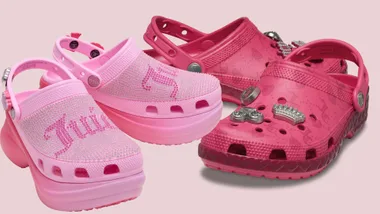I have recently moved house and it got me thinking about some practical step-by-step ideas that may help others. For the first time, I have decided to treat myself to a large 4m-long wardrobe, with plenty of shelves and hanging space. I’ve always had a small wardrobe, so I would layer three or four garments on one hanger and stuff everything in. oost of the time I didn’t even know what I had – or else I couldn’t find it. I’ve decided to take this opportunity to have a big clear out and sort my wardrobe.
In doing so I’ve found I haven’t needed to buy any new clothes – by simply having a place for everything, I’m wearing much more of what I own and I’m having fun mixing things up. It’s not about getting rid of everything or spending money on new things – that will complicate matters. It’s about cleansing and simplifying your life so it’s functional. I hope you feel like a new and improved you afterwards.
Step one: assessment
Having a clean out takes time, so the holidays or a long weekend is a great opportunity to do it. The first thing to do before you get started on the practical side of things is to ask yourself some questions so you have a clearer idea of what your needs are.
The reason you should ask yourself these questions (below) is because our lives are always changing and what once worked for you may no longer be serving its purpose. For instance, many women find they have a style crisis as their children get older and they go back to work.
If you’re a stay-at-home mum, you may dress to be comfortable and practical, but your personal style can often take a back seat over this time.
Life-changing events like divorce, moving, or losing a job may profoundly affect you, and transitioning to a new phase in a positive manner will be a welcome, refreshing change.
Gaining or losing weight is probably the most common change that women experience, and having a wardrobe full of clothing you hope one day to fit back into will only leave you feeling demoralised.
Free yourself of unnecessary self-taunts. Now you have asked yourself these questions, take a look through your things and see whether your wardrobe reflects your current lifestyle.
Assessment questions:
What do you do? How are you required to look for this position?
Are you a mother?
Are you married or in a relationship?
What do you do with your social time?
What are your interests?
Do you travel?
Are you happy with your appearance and wellbeing?
What climate do you live in?
Have you had any life-changing events happen lately?
Step two: action
Sort, compile and edit.
Start to put all your clothing into sections, then sub-sections. For example, pants, then jeans, cargos and black pants etc.
Try on
Make sure you have a full-length mirror. Try each item on and ask yourself:
Are they in good working order? Are there any missing buttons, broken zips, unwanted marks or rips?
Do they fit?
Are they flattering? often we purchase the same things over again. You may have five pairs of black pants of which only two pairs fit well and flatter your shape. It’s time to move the others on. Continue this process with each category of clothing – tops, shirts, dresses and jackets. once you have piles of the definite keepers, put the items you don’t wear or that don’t flatter you to the side.
Transition
Parting with clothing can be difficult. I always have a transition period. Fold the items up and put them into a bag and place it somewhere away from your wardrobe, like the laundry or garage. Leave them for six weeks. If you can go the full six weeks without feeling you have to go and get items out of the bags to bring outfits together, it’s time to move them on.
Remove
Items that have holes or stains should be thrown away. Designer label garments that are in good order can be sold at recycled fashion stores, or online.
This will give you some cash to put towards new items. Anything outside these categories should be given to charity. You will find clothing bins in various places around town.
Archive
This might be necessary if you have a small wardrobe. Neatly store jackets and coats that are out of season in another room, or in a suitcase that can be slipped under the bed until they are needed.
Clean
Now you have removed all your clothing from the wardrobe and have sorted out what’s staying and what’s going and you’ve archived what’s out of season, it’s time to clean. Wipe down all the surfaces of your wardrobe space, removing dust, dirt and cobwebs. Let the space air out and dry completely before putting your clothing back.
Archiving clothes that are out of season is a great way to create more space in your wardrobe. Make sure that clothes are laundered prior to storing. It pays to keep items covered in garment bags to avoid moths and damp getting to them.
Step three: organise
Now for the fun part. All the hard decision-making has been done and it’s time to put everything neatly back in place so you know where to find it.
Just like in the trying-on process, hang everything in sections (eg all pants together), then sub-sections (eg all jeans). If you really want to pay attention to detail, all your garments can go from dark colours to light.
No matter how much space you have, you are always going to want more, so get creative with storage – there’s something for all budgets, from portable shelves to built-in wardrobes.
Keep your accessories in order. If you have them hidden away you will forget about them.
I love the transparent plastic containers from hardware stores. You can see what’s inside, they can be easily stacked and they’re cheap.
Keep large shopping bags as they make fantastic storage for handbags and scarves.











